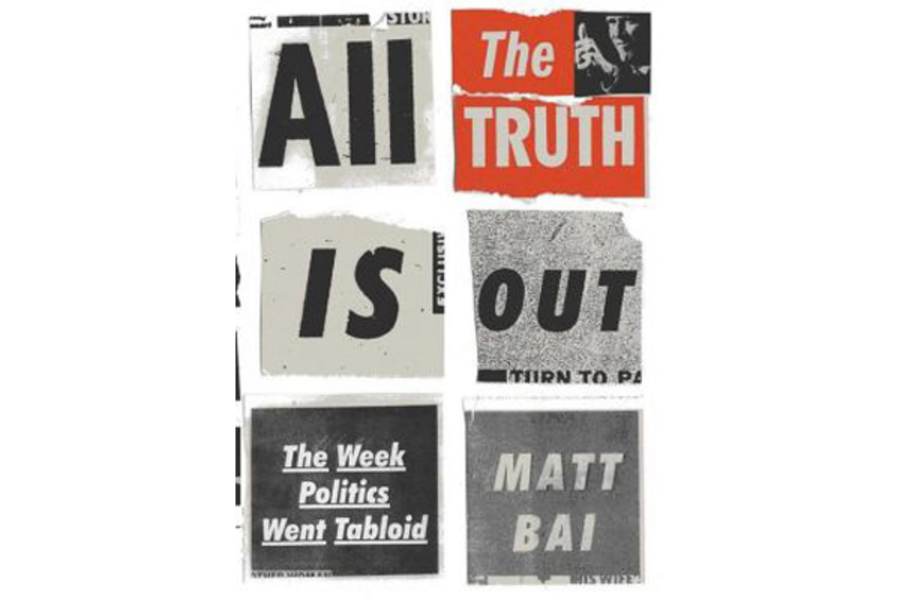'All the Truth Is Out' points to the Gary Hart scandal as a turning point for US political coverage
Gary Hart was on his way to greatness. All that stood between him and the 1988 Democratic nomination for president was a few primary elections, which were all but sealed. The senator from Colorado was smart, good looking, and polls showed he had a double-digit lead over the Republican opposition.
But rumors that Hart was unfaithful to his wife began to circulate. Tom Fielder, a political reporter for The Miami Herald, got an anonymous tip that the rumors were true, and a picture could confirm it. The Herald sent its team to work, tracking and tailing Hart, waiting outside his home to get a glimpse of Donna Rice – a tall, young, attractive blond woman who had worked as both a model and actress – on her way out.
The story comes to a head when Fielder, Jim McGee, James Savage, and Brian Smith met with Hart in an alleyway near his house, cornering Hart into answering questions about the rumors, about the woman they saw entering his house. On May 13, 1987, The Miami Herald published a front-page article connecting Hart to Rice.
The rest is history. The scandal caused Hart dropped out of the race and out of the public light. He is now virtually unknown to anyone not alive during that time, myself included.
Matt Bai’s book All the Truth is Out explores the presidential election of 1988. But the book isn’t a historical account of Hart’s fall. Nor is it really about the Hart story. Bai’s book is about today. About how political journalists became paparazzi and talking heads pontificating about personal flaws.
“By the 1990s, the cardinal objective of all political journalism had shifted from a focus on agendas to a focus on narrow notions of character, from illuminating worldviews to exposing falsehoods. If post-Hart political journalism had a motto, it would be: ‘We know you’re a fraud somehow. Our job is to prove it,’ ” writes Bai, national political columnist for Yahoo and former political correspondent for The New York Times Magazine.
This isn’t "All the President’s Men". But Bai revisits the Hart saga through an exposé. He discovers who it was that sent an infamous photo of Rice on Hart's lap to the Miami Herald, and he also uncovers a myth that has hardened – inaccurately – into objective history. In an interview with EJ Dionne, Hart said, “Follow me around. I don’t care. I’m serious. If anybody wants to put a tail on me, go ahead. They’d be very bored.” Even today it is believed that the journalists who staked out Hart’s house were simply taking Hart up on his offer. But Bai makes clear that is a faux chronology. The stakeout happened well before Hart made the declaration. The Miami Herald added that statement to their story just before publication.
"All the Truth is Out" is a well-written examination of how the press coverage of American politics shifted to talking heads pontificating about the current political fodder. The job of a journalist is to reveal the facts, to tell the public everything, and let voters make decisions with that knowledge. But Bai is arguing that journalists have become more interested in uncovering the facts of a candidate’s personal life than analyzing the facts of political platforms. The night in the alley, where Herald journalist confronted Hart, suggests Bai, blurred the line between relevant and irrelevant personal scandals.
At the time of the Hart scandal, Bai writes that newsrooms were struggling with the rise of the political scandal, and that battle played out in the editorial pages of the paper. The New York Times said the scandal was “eminently justified,” while Anthony Lewis called it a “low point” for political journalism. The argument isn’t that personal scandals aren’t newsworthy – some are. Rather, Bai's point is, that people shouldn’t be judged solely by the single worst mistake they ever made.
Other reviewers have written that Bai makes too much of the connection between Hart and the political tabloids of today. Maybe there is some validity to that statement. Certainly other factors too worked to bring change the political and media climate. But Bai makes a strong argument that this was a watershed event. Arguments over the newsworthiness of a scandal seem not to take place any longer. The public and media long ago decided that the personal affairs of politicians are open to public scrutiny.
This book isn’t just for politicos. It is a must read for anyone interested in contemporary politics and media. We should all be concerned about Bai’s conclusion, that society has came to demand political robots, who have no flaws but also take no stance. We live in an era when strong candidates sometimes chose not to run for fear that their private lives will be scrutinized.
That scrutiny begins with journalists, who are perhaps all too hungry to find the flaws in politicians.







